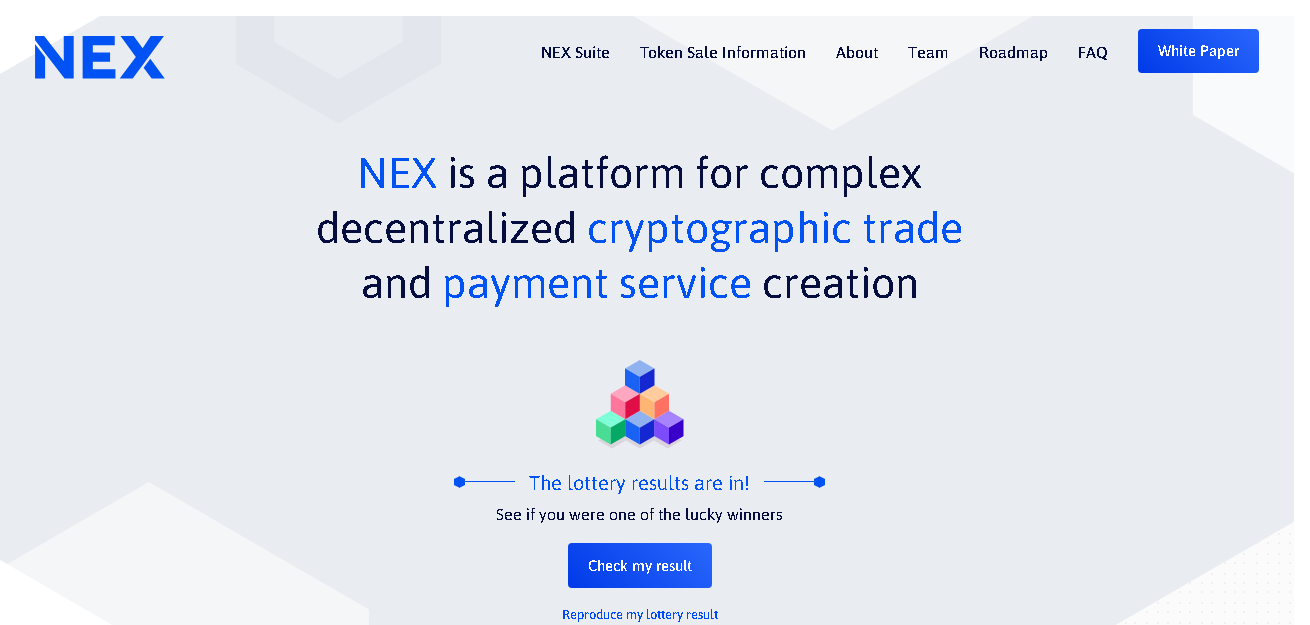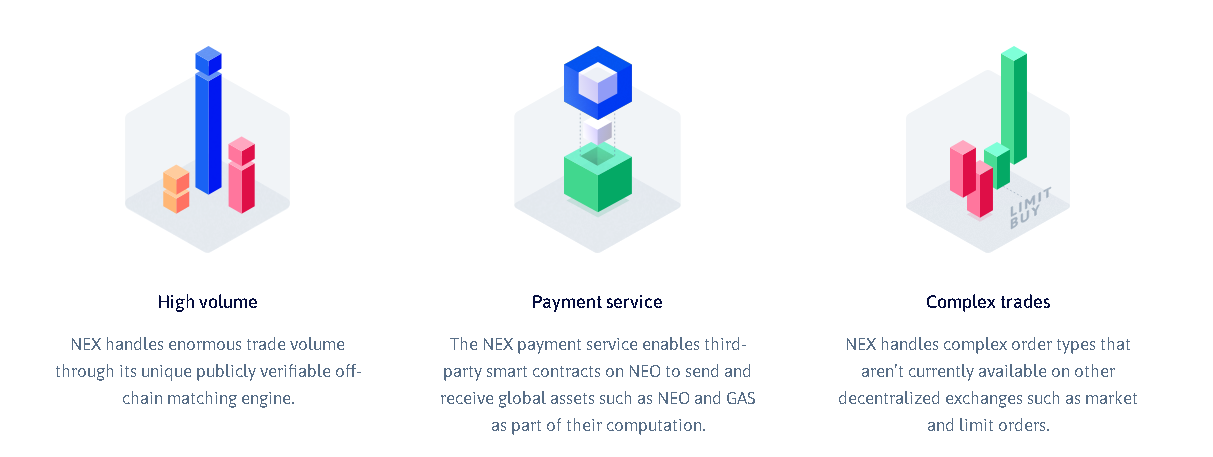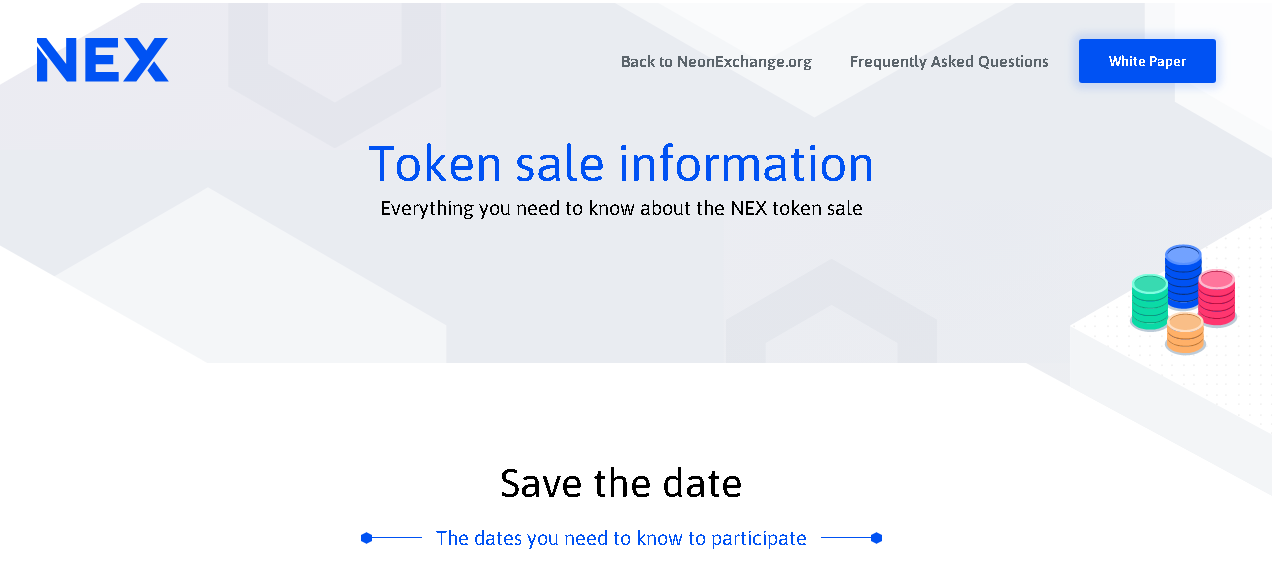Neon Exchange (NEX) – A Decentralized Exchange with Better Performance
| Coin Name | Neon Exchange |
| Coin Ticker | NEX |
| Token Type | Neo Blockchain |
| Total Tokens | 50,000,000 |
| Website URL | https://Neon Exchange.org/ |
| White Paper URL | https://Neon Exchange.org/pdfs/whitepaper_v1.1.pdf |
Neon Exchange’s (NEX) goal is to be a better version of Ethereum. It does this by combining the NEO blockchain with an off-chain matching engine to enable much faster, larger volumes of trading and more complex trades than the existing decentralized networks.
These types of complex trades include market orders, limit orders and trading on the margin. NEX also has a payment service that enables third-party smart contracts on NEO to receive global
assets such as NEO and GAS.

The Team and Idea
Neon Exchange aims to combine the performance of centralized exchanges with the trust and security of decentralized exchanges. Neon Exchange combines the NEO blockchain with an off-chain matching engine to enable faster and more complex trades than existing decentralized exchanges.
In realizing this goal, the team has developed a system with three main components:
- an off-chain trading engine
- a smart contract where trades are executed
- and a payment service where NEO or GAS (the tokens of the Neo network) can be converted to tokens and transferred directly by smart contracts

The team behind NEX is part of one of the largest open-source communities, City of Zion (CoZ). CoZ is focused on the blockchain and decentralized applications, specifically in the NEO network. NEX’s four cofounders and developers – Fabio C. Canesin, Fabian Wahle, Ethan Fast and Luciano Engel – were all founders of the CoZ organization, giving them considerable experience of the NEO network.
The Neon Exchange Technology
To understand Neon Exchange’s technology, let’s first take a step back and understand the NEO blockchain at a basic level.
The NEO blockchain is seen as the biggest competitor to Ethereum. Launched in 2015, it was known as China’s first public blockchainand known as Antchain until 2017 until it rebranded as NEO. Both Ethereum and NEO operate on the idea of a smart contracts ecosystem, but NEO is faster, with the ability to handle over 1,000 transactions per second (its goal is to reach over 10,000 transactions per second). In comparison, Ethereum can handle only 15 transactions per second.
Neon Exchange wants to be the first decentralized exchange to allow its users to trade tokens on the NEO blockchain. The question is: How will it go about doing this?

First, let’s take a look at the Ethereum blockchain and how it’s built. Ethereum is built on an Account Model. This means that a user’s balance of Ethereum is stored as a number in the Ethereum Virtual Machine (EVM) and can be modified through smart contracts. The benefits of this system are that it is easy to provide this type of smart contract interaction, but difficult for a node to prove that a transaction has taken place. (Nodes form the backbone of the Ethereum system and help validate transactions in the system).
Neon Exchange, on the other hand, is built on a UTXO model, which means that funds are sent and received through a chain of separate IDs on the network. The result is the exact opposite of the benefits of Ethereum’s setup; it’s easy to prove that a transaction has taken place but difficult to provide smart contract interaction.
Thus a payment service layer was introduced to Neon Exchange that converts global assets (such as NEO and GAS) into smart contract tokens through the payment service address. It combines the best of both worlds: smart contract interaction is provided while also proof that transactions have taken place. The idea is that this exchange will spread and other networks will adopt UTXO models with smart contracts.
Here’s an example of how it works: When you deposit NEO into the NEX payment service, a balance of XNEO (transactions on NEX are performed in XNEO) is transferred between smart contracts. With the use of a third-party you can access your XNEO, sending some of it to another user who then authorizes a second smart contract to use the rest. The second smart contract withdraws NEO from the payment service.

It’s not enough that this new exchange will be compatible with NEO, however. The team envisions multi-chain transfer between other exchanges such as Ethereum and Cardano. To do this they are planning to build a network of partners to handle these different on and off-chain events and produce NEP-5 (NEO’s token) assets with the help of smart contracts.
The idea is to also allow fiat currency exchanges, which will lead to decentralized banking. This is a long-term vision of the organization.
The Neon Exchange Tokens
There will be a maximum of 50 million tokens available, which Neon Exchange hopes to use to raise $25 million for half of the tokens. The other half will be distributed between its founders, the NEO Council, partnerships and an employee stock ownership plan.
The NEX token is a security, which means that the team can only list the token on exchanges permitted to trade securities. This option doesn’t currently exist, making it a bit of a challenge. However, tokens were sold via their website through a lottery. First rounds of the lottery allowed a maximum contribution of $1000 while second rounds allowed a maximum contribution of $9000.
The actual token sale will be announced in April 2018. Each NEX will be the equivalent of one US dollar

The Neon Exchange Platform
The main difference between Neon Exchange and other decentralized exchanges are that it offers an off-chain matching system. When orders are handled off-chain in a trusting and secure manner, it allows for faster transactions. On-chain protocols (such as 0x, Kyber and Loopring) will still be used, however, to improve liquidity. A few partnerships are already planned, such as Thor bank, to integrate NEX into their infrastructure.



Neon Exchange will first run on NEO and later expand to run also on Ethereum. At that point it will have ETH, ERC20, NEP-5 and GAS token trading, but this is scheduled only for Q3 of 2018.
The Neon Exchange ICO
Neon Exchange recently announced that their legal team has determined that Japan, South Korea and China can participate in the ICO. The US, however, is blocked from participation.
The NEX token sale is scheduled to be in April 2018.
